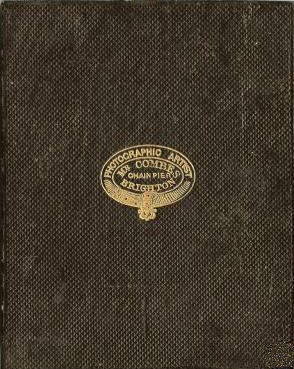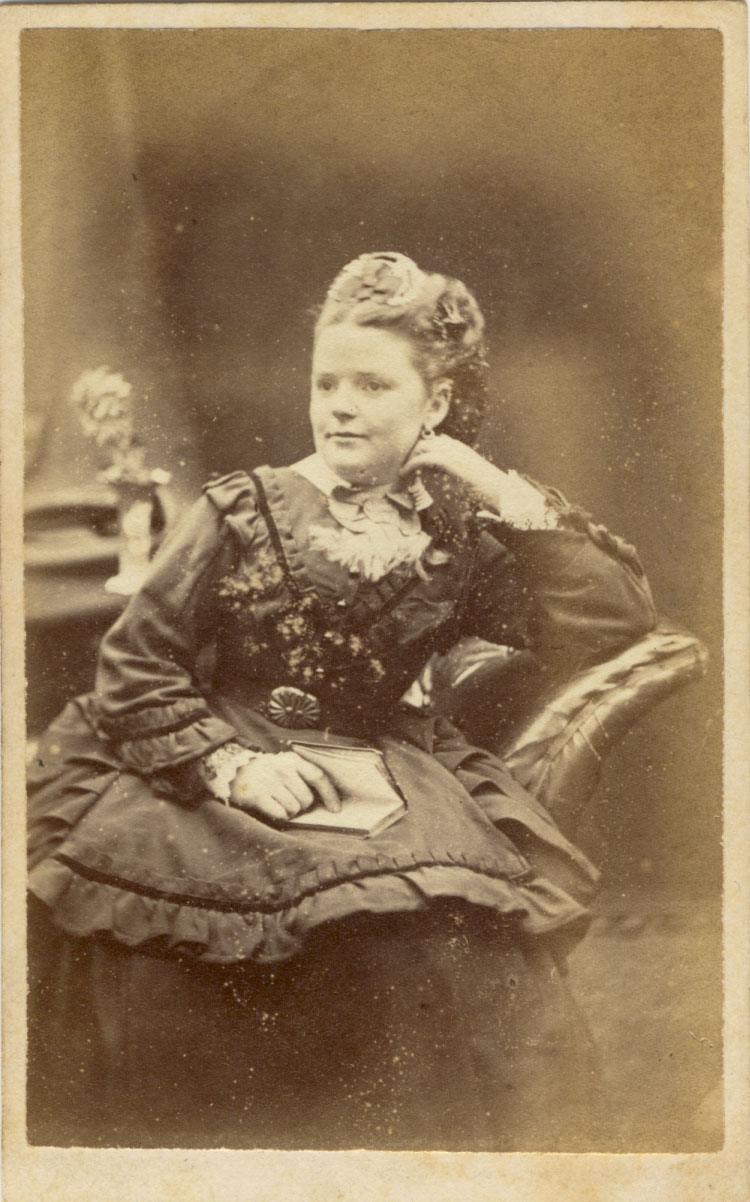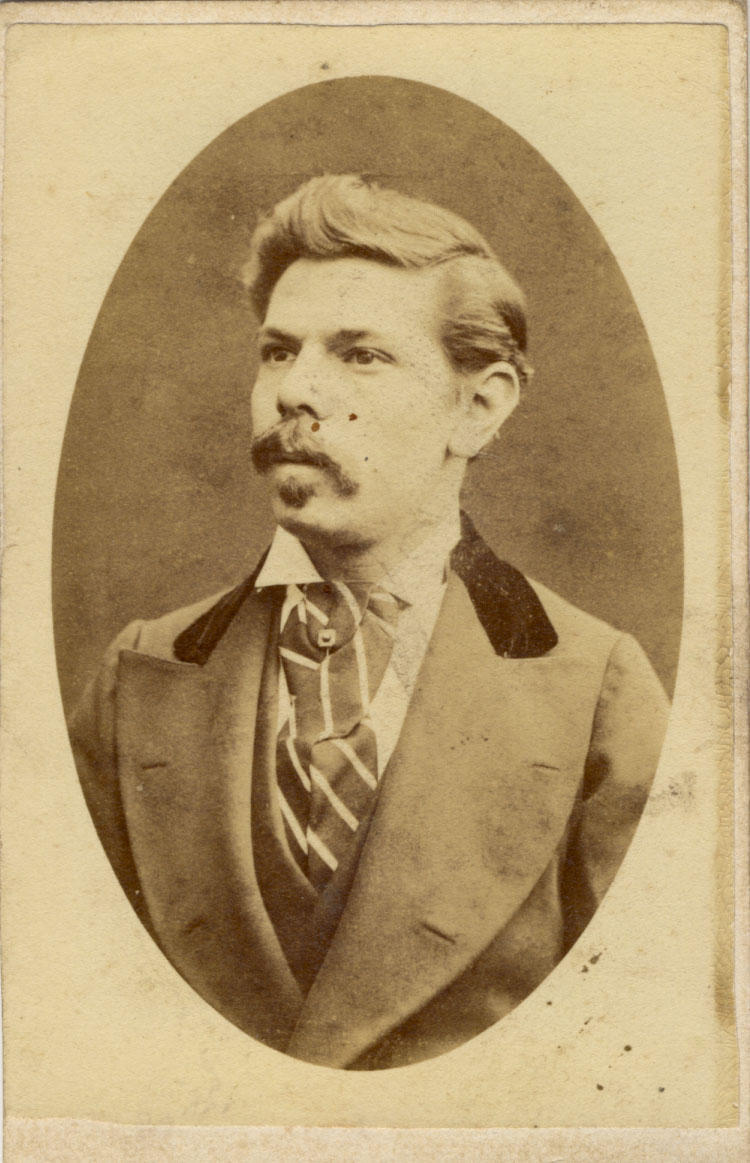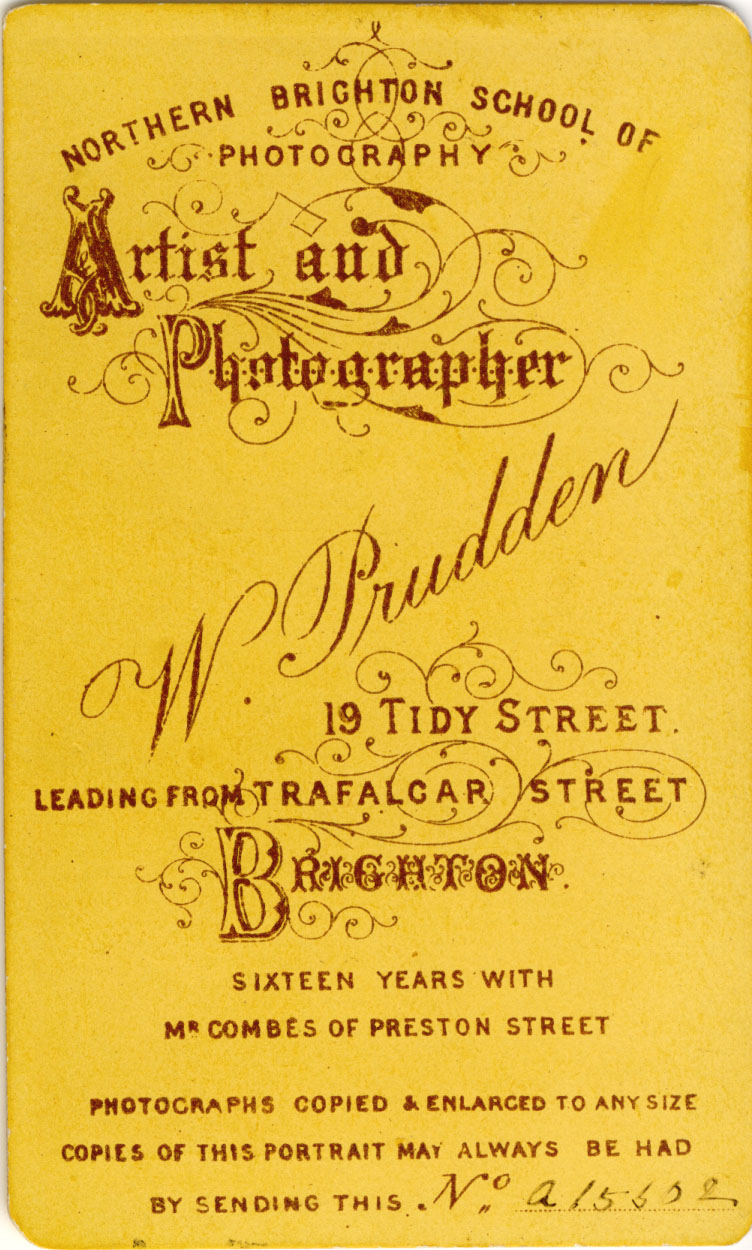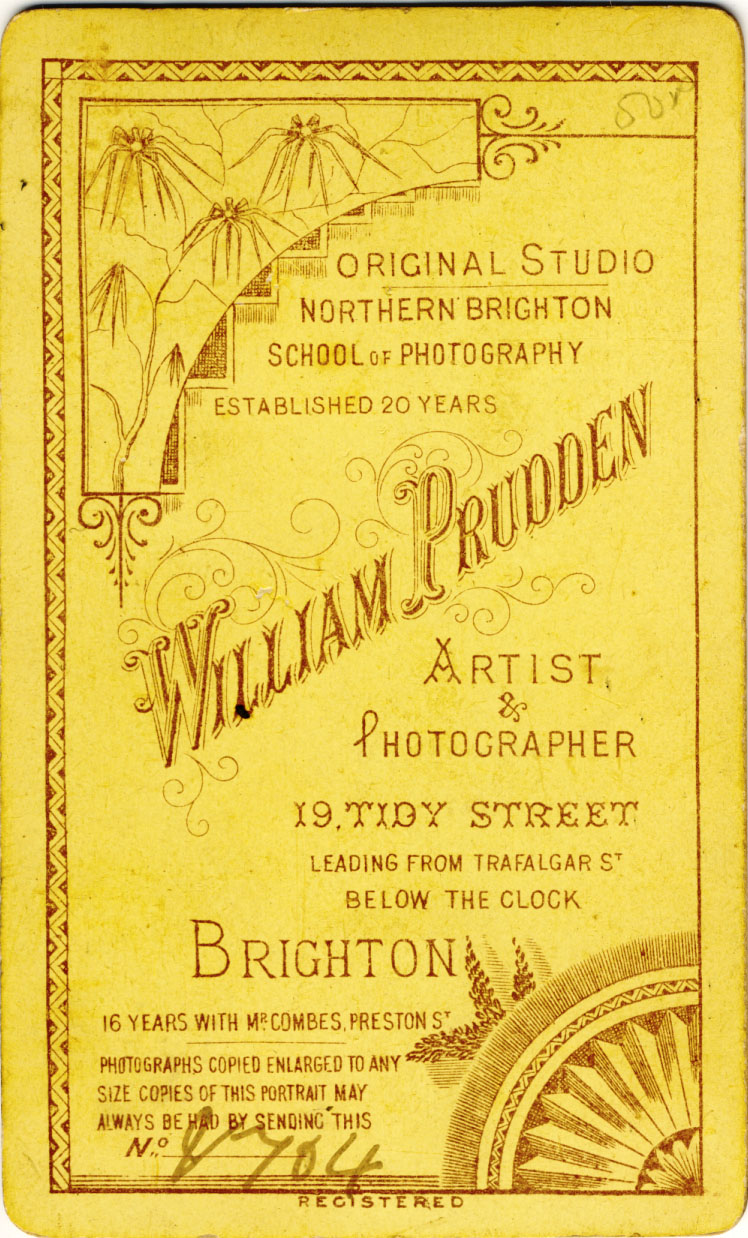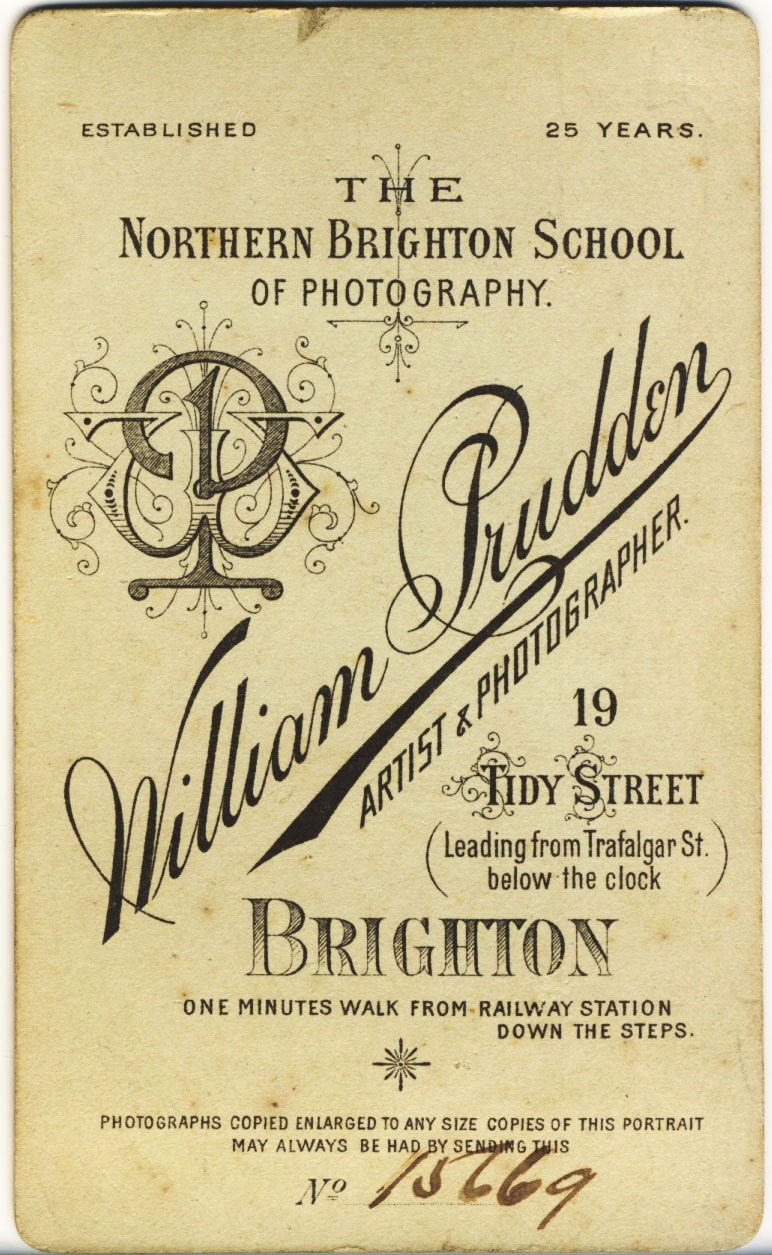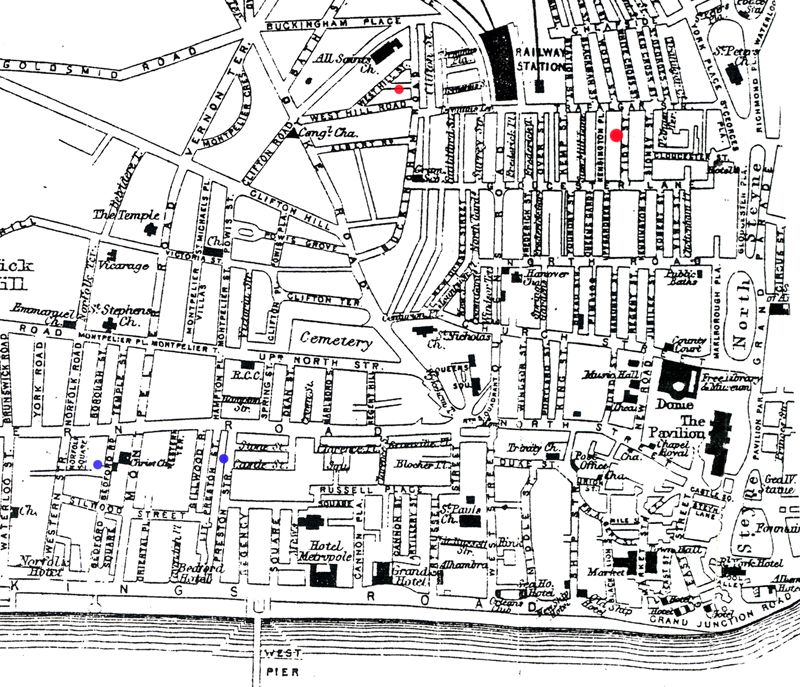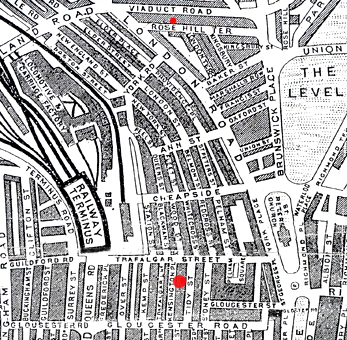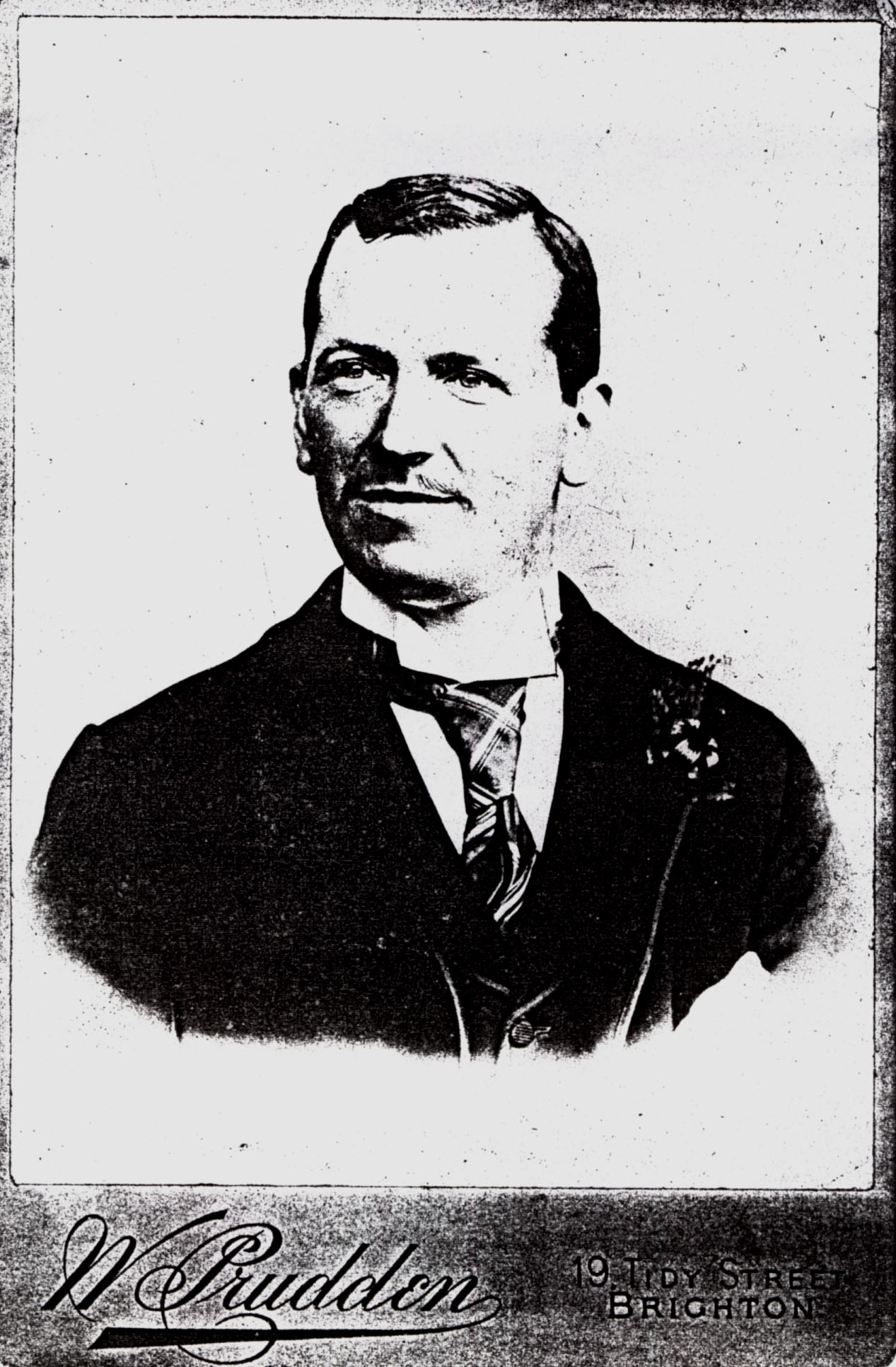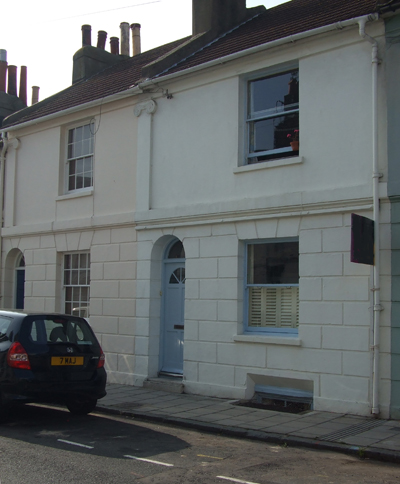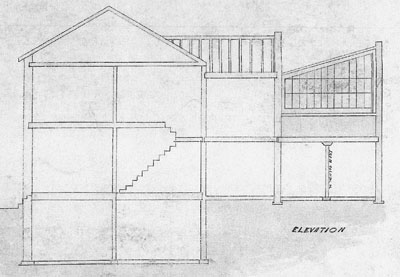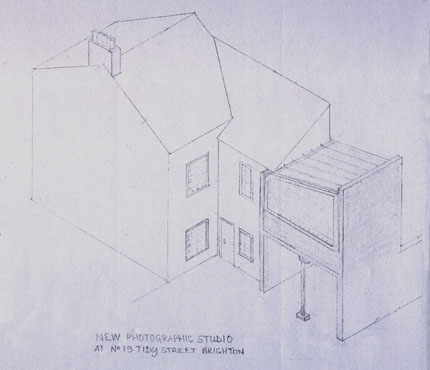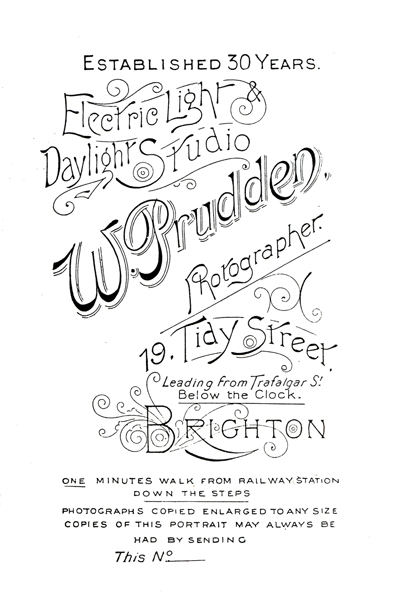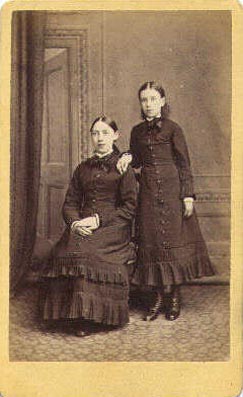The origins of the Brighton photographer William Prudden are not absolutely clear. When the 1901 census was taken, William Prudden, then described as a "Photographer (Employer)", aged 59, gave his place of birth as Barnet, Hertfordshire. Previous census returns (1861, 1871, 1881), however, state that the Brighton photographer was born in London.
Research independently carried out by Yvonne Dedman and John Yates has indicated that William Prudden the Brighton photographer was, in fact, William Prudden (1), the son of Philadelphia Prudden (born c1807, Welwyn, Hertfordshire) a domestic servant. Around the time Philadelphia (Phillis) Prudden became pregnant with her son William, she was working as a servant and living in Manchester Square, St Marylebone, London. It appears that William Prudden (1) was born in London around 1842. Yvonne Dedman believes it is possible that Philadelphia Prudden was unmarried when she gave birth to William Prudden (1). When William Prudden (1) married in 1867, he stated that his father was "Henry Prudden" who had previously been employed as a "Coachman". John Yates has established that Phillis (Philadelphia) Prudden was living at 28 Upper Park Place, Brighton, with her 9 year old son William Prudden when the census was taken on 30th March 1851. Phillis Prudden (entered as "Phillis Pruden" on the census return) is described by the enumerator as a 43 year old widow from "Wellen" (Welwyn), Hertfordshire. The place of birth of her son William Prudden (1) is given as "London". William's mother, Phillis Prudden, was serving as a nurse to the children of Esau Hawkins and his second wife, Sarah Hawkins (formerly Prudden). Esau Hawkins' wife was born Sarah Prudden in Barnet, Hertfordshire, around 1814, and was probably related to Phillis (Philadelphia) Prudden, William Prudden's mother. In 1829, Phillis Prudden was a witness to the marriage of John Prudden (born c1803, Barnet, Hertfordshire) which took place in St. James, Westminster. His mother's family connections to the Pruddens of Hertfordshire might have prompted William Prudden to declare that he originated from Barnet, Hertfordshire, when he completed his census returns in 1901 and 1911.
The birthplace details given on the 1901 and 1911 census returns have muddied the waters, as this information pointed to a William Prudden (2), who was born in 1839, the son of John Prudden and Lucy Fairs of Chipping Barnet. John Prudden (1803-1876), the father of William Prudden (2), was born in Hertfordshire at Chipping Barnet (High Barnet), a parish and market town, roughly 10 miles north-west of London. John Prudden worked as an agricultural labourer. Lucy Prudden, John Prudden's wife, was born in 1810 at Baldock, some twenty miles north of Chipping Barnet. John Prudden and his wife Lucy produced at least seven children - James (born 1836), William (born 1839), George (born 1841), Edward (born 1844), Lucy (born 1846), Charles (born 1848) and Alice (born 1851). At the time of the 1851 census, John Prudden is recorded as a farm labourer. William Prudden (2) is entered as a scholar, aged 12, which suggests a birth date of 1839. By the time the 1881 census was taken, Mrs Lucy Prudden, now a widow and described as a former laundress, was living with her son George Prudden and his family in East Barnet, Hertfordshire. Mrs Lucy Prudden died in Barnet in 1885 at the age of 75. Both Yvonne Dedman and John Yates have pointed out that William Prudden (2), who was born at Chipping Barnet in 1839, could not possibly be the Brighton photographer, as he died at New Barnet on 28th June 1869.
It appears that William Prudden(1) was living in Brighton before the census was taken on 20th March 1851. By his own account, William Prudden was working as an assistant photographer in Brighton by the mid 1850s. Philadelphia (Phillis) Prudden, William's mother, died in Brighton on 20th February 1861, at the age of 54. At the time of her death, Philadelphia (Phillis) Prudden was residing at 10 Liverpool Street, Brighton, where she was employed as a servant. When the census was taken 7 weeks later, William Prudden (1), described on the census return as an 18 year old "Photographer", was lodging at 57 Carlton Street, Brighton. In 1861, William Prudden (1) informed the census enumerator that he had been born in London around 1842.
|
|
| [ABOVE] In his studio publicity, William Prudden declared that he had worked "Sixteen years with Mr Combes". Charles Combes was an early photographer who had opened his first photographic studio in 1854. |
|
|
| [ABOVE] A map of
Brighton dating from the 1860s which shows significant locations
in William Prudden's early life and career in the seaside town.
The brown dot shows the location of 28 Upper Park
Place, Brighton, where William Prudden was living with
his mother Philadelphia (Phillis) Prudden at the
time of the 1851 census. The
green
dot indicates the position of Liverpool Street, Brighton,
where Philadelphia (Phillis) Prudden passed away in
February 1861. The
red
dot marks 57 Carlton Street, Brighton, where
William Prudden was lodging at the time of the census in April
1861. The blue dots show the location of the photographic studios where William Prudden was employed as an assistant during the period 1854-1861. Charles and John Combes had opened a "Photographic Gallery" at 62 St James Street, Brighton, in 1854. Charles Combes set up another photographic studio on the Chain Pier Esplanade around 1858. In his later publicity, William Prudden declared that he had been "16 years with Mr Combes". |
|
William Prudden's Mysterious Father William Prudden appears to have had little knowledge of, let alone contact with, his putative father. When William Prudden married in 1867 he informed the Registrar that his father was "Henry Prudden", a coachman. Yvonne Dedman has suggested that William Prudden was possibly Philadelphia Prudden's illegitimate child. Thirty years later, when he married for a second time, William Prudden stated that his father was "William Prudden, private coachman, deceased".
|
|




